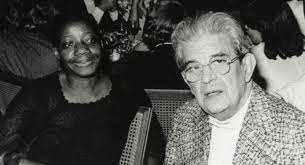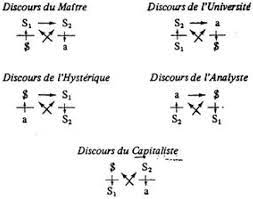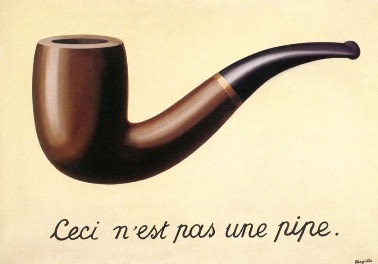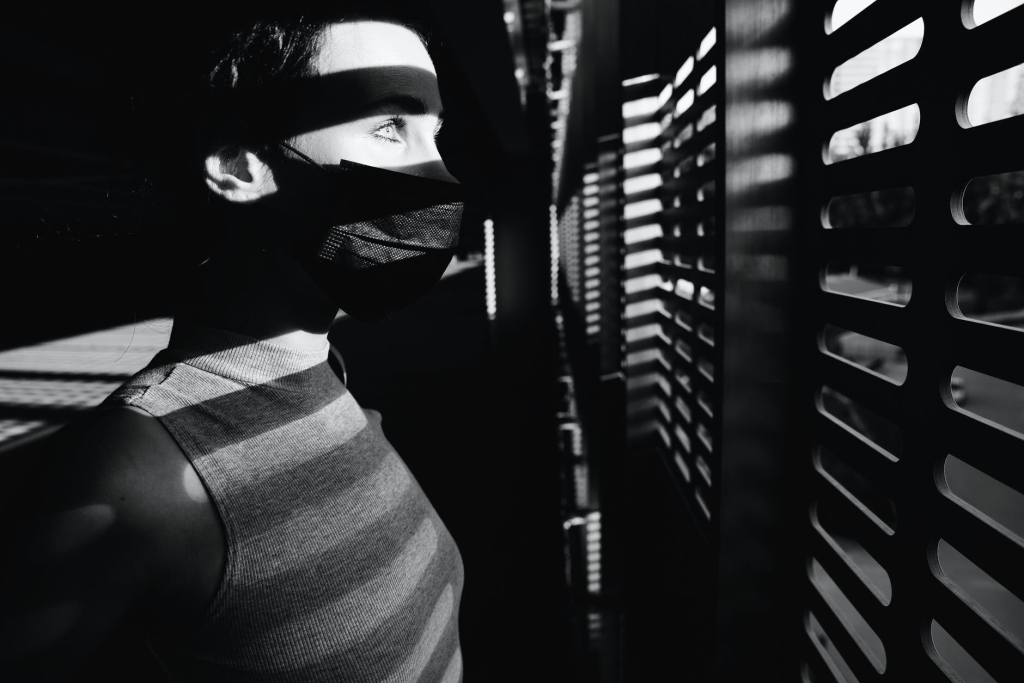
(Will contain spoilers/spoil things)
Read more: The return of the real and The Zone of InterestFront Fanon, in addition to being an anti-colonial revolutionary and theorist, was also a psychiatrist. He recounts a case in Algeria in which a man exhibited a range of symptoms, including increasing domestic violence, that could not be explicated via classical psychoanalytic theory. Breaking with protocol, Fanon directly asked: “What do you do for a living?” As it turned out, the man was a police inspector, namely, a torturer, working for the French during the period of anti-colonial uprising.
We have all heard of the so-called banality of evil. What is more interesting is the evil that is not so easily banalised, so easily assimilated and routinised into life.
The Höss family live a good life. The system into which they have committed themselves works efficiently. We see the Germanic gestures to health in the form of fishing, hiking, riding, fresh air. To this end, the film is largely flat and two-dimensional, with little in the way of tension and release. At one level, it is a program rather than a sympony.
Herr und Frau Höss are depicted as an ordinary couple and set of parents in certain respects, but we should not be too quick to relegate them to say, Leonard Cohen’s diagnosis of Eichmann. Enough detail is given regarding their casual sadism, and the distorting effects of their ‘work’ to glimpse them as odious monsters. To the man with a hammer everything is a nail and thus it is also for the commandant of a death camp. The hypocritical yet Puritanical touches in the couple’s bedroom scenes furnish some other examples. Rudolph Höss rapes a woman, then comforts his daughter, and humours his wife.
There is a long history of philosophical and aesthetic debate about the possibility of giving representation to trauma, and to the Holocaust in particular, and the director of this film, Glazer, has opted to omit representation in the form of direct visual images. In the absence of images of the horror of Auschwitz, there is a risk that the film could have depicted nothing more than the bourgeois existence of a bureaucrat’s family intermingled with scenes of country life which amount to some protocols for hygiene and exercises in accounting.
What the film shows instead is the return of all that which cannot be assimilated into this otherwise well-ordered system. It shows it in the form of disruptions: scenes in block colours; a negativised angel of mercy scattering apples; the jarring sounds of death and brutality. Above all, it avoids the direct depiction of trauma, choosing instead to displace it onto objects (and sound, and music, and poetry, here, I include as object). Consider Frenzy by Alfred Hitchcock. The moment of the serial killer’s murder of a woman is not directly given, but instead the film displaces this traumatic event onto the otherwise innocuous street as the camera moves away from the crime scene. It is a return in the real, and not the return of the repressed (i.e. something that could be recuperated as desire). Think of Tony Soprano and his panic attacks, but think also that Tony Soprano was never in the business of murdering and mutilating civilians.
The viewer is, in a sense, implicated in The Zone of Interest’s ‘turning away’, but the characters themselves are not. Herr and Frau Höss cannot be grasped via a logic of repression, or bad faith. They know very well what they are doing, but they presume that they can get away with it unscathed. If there is any depiction of self-deception in the film, it belongs to the mother of Madame Höss, who is clearly anti-Semitic in the abstract but who also recoils to see the logical conclusion of her beliefs enacted concretely. She turns away and takes flight, but not, the director tells us, for reasons of conscience. When I say that the operative logic here is not the paradigm of repression, it is definitely not in any way to suggest some form of madness is the culprit either.
In this case, the evil in which the film’s protganists are involved leaves them literally covered in its detritus, in the form of ash, bone, teeth and smoke. This return of the unassimilable leads to Höss consulting a doctor late in the film. Well-ordered murder, even in a fine country manor, is bad for one’s health. By the end of the film, Höss retches and dry heaves, but cannot alleviate himself of the object stuck within himself. The symbolised object, the one that can be effaced, given a plus or minus sign, is always at least minimally assimilated, but so much worse is the object that one cannot be rid of. This is the object petit a in Lacanian language, and this is the one that the murderers are stuck with at the end of the film, and it casts every other ‘banality’ of their existence – excited phone calls, celebratory drinks – into a completely different light. Höss is a bulmic of death and suffering, and one who cannot purge,
Let’s not forget that Auschwitz was the end product of a long process of ‘instrumental rationality’. The Shoah began on the Eastern front, wherein the most fanatically racist of SS volunteers would spend their days shooting captured and helpless civilians of all ages at point blank range. Notwithstanding the volunteers’ fervour, this activity proved to have ill-effects on all parties, and the death camps, with their mediation of murderer and murdered via checkpoints, walls, buttons, etc were a response of sorts to this problem. The killers still knew that they were killing, obviously, but there were certain screens allowing for the illusion of reduced subjective implication at each particular step.
In colonial Australia, we are no newcomers to genocide, but here colonial subjects are objects to be ‘managed’ more than eliminated or cleansed. We might think of the so-called ‘Intervention’ of 2007, supported by both major political parties, on the basis that it was for Indigenous people’s own good. There are no innocents, here, but relatively few genocidaires, and vanishingly few who are open about it.
Some may observe, quite correctly, that Glazer’s film centres the Germans and not the Jews, the perpetrators rather than victims. I suspect that this is the point. Nazi’s are already cinema’s most readily-available bad guys, and another movie depicting them as evil would be utterly redundant. Moreover, relative to virtually every other horrific catastrophe of the past 100 years, the Holocaust is well-documented and memorialised, which is not to say that anybody is done with it. What this movie demonstrates is that for all the instrumental rationality, for all of the relative marginality of the victims from within thei Nazi standpoint, the victims are nonetheless not eliminated. They return in the real, in the form of ash, and waste, and sickness that can never be dialecticised or abolished. Under Nazism, it was the Nazi who defined the Jew. It was not a question of the latter’s belief or practices. Conversely, whilst occupying a very different position, the Nazi comes also to be constituted by his or her Other. He carries it within him, irrespective of whether he knows it. The Nazi, too, has an unconscious, and the Nazi, too, is tormented in the real. I suspect this, and not the Nazi’s moral pungency, is the point of the film, and also the source of its discomfort for Zionists. (I am referring to the hysterical backlash to the director’s comments at the Oscars). One can utilise personal and social hygiene, as we see in Zone after the children bathe in the poisoned river, and after Höss perpetrates his rape. Like Lady MacBeth’s spot, things in the real cannot be washed off. The real is the impossible. It isn’t cleaned away, neither with water nor bulldozers.
Amidst the genocide of Palestinians, aided and abetted by many other nations, isn’t the Zionist wager that the ‘flower of youth’ of Israel can be deployed to sow propaganda, sexually assault and torture prisoners, maim and murder children, be indoctrinated in radically fascist and racist ideology, projecting every imaginary ugliness onto the figure of the Palestinian, and somehow return home from all this and go back to ‘normal’? That the rapists, murderers, professional liars and spectators finding jouissance in gore-porn will somehow re-integrate into well-ordered communities and families without symptoms, unscathed? Comparisons to 9/11 have been plentiful, even though support for war, much less genocide, was far more equivocal in the US than it is in Zionist Israel. Can a society overwhelmingly dedicated to reaping the benefits of genocide and ethnic cleansing truly be okay? Unscathed? This is the wager of the genocidaires. The early evidence suggests that they are terribly wrong, and Glazer’s film is a powerful articulation of this error.









